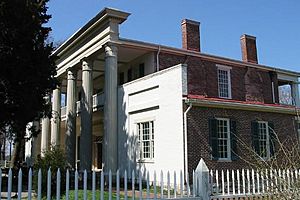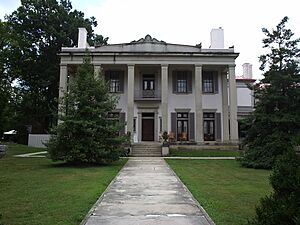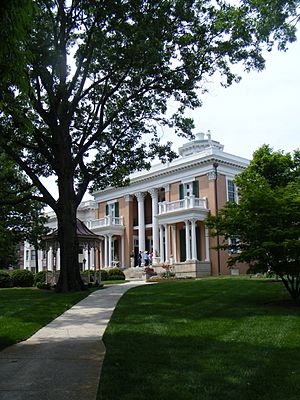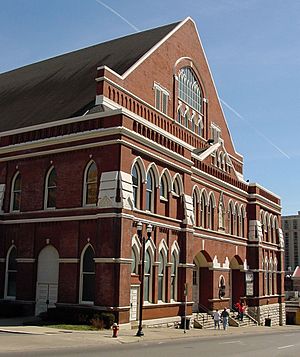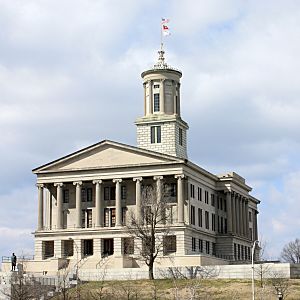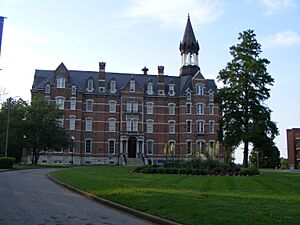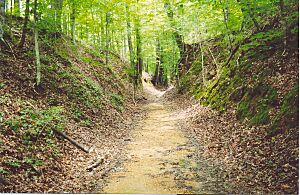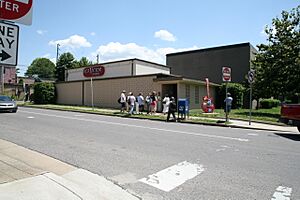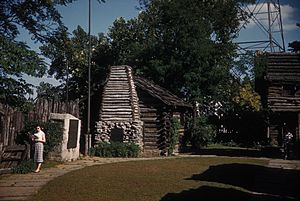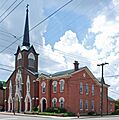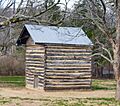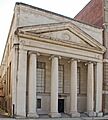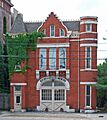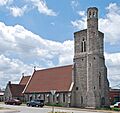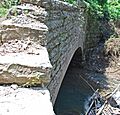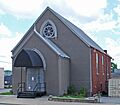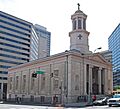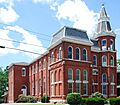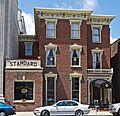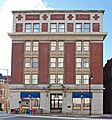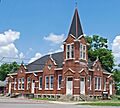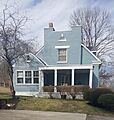National Register of Historic Places listings in Davidson County, Tennessee facts for kids
Davidson County, Tennessee, is home to many amazing places that are listed on the National Register of Historic Places. This special list includes buildings, sites, and objects that are important to American history, architecture, archaeology, engineering, or culture. Think of it like a hall of fame for historic spots!
In Davidson County, there are nearly 200 places on this list, including seven that are extra special and called National Historic Landmarks. These landmarks are recognized for their outstanding national importance. Let's explore some of these cool historic places!
Contents
Cool Historic Places in Davidson County
Davidson County has a rich history, and many of its buildings and sites tell fascinating stories. From grand homes to famous music venues, these places help us understand the past.
Homes and Plantations
Many historic homes in Davidson County offer a glimpse into how people lived long ago.
The Hermitage: Home of a President
The Hermitage is a large plantation located east of Nashville. It was once the home of Andrew Jackson, who became the seventh President of the United States. This historic site, listed on October 15, 1966, is a National Historic Landmark. You can visit to learn about Jackson's life and the history of the plantation.
Belle Meade Plantation: A Grand Estate
Belle Meade Plantation is another important historic home, located in the city of Belle Meade. This grand estate was once a famous horse breeding farm. It was added to the National Register on December 30, 1969. Today, visitors can tour the mansion and learn about its history and the horses that lived there.
Belmont Mansion: A College Gem
Belmont Mansion is a beautiful historic house on the campus of Belmont University in Nashville. Built in the 1850s, it was the summer home of Adelicia Acklen, one of the wealthiest women in the South. It was listed on May 6, 1971. The mansion is known for its stunning architecture and gardens.
Important Buildings and Landmarks
Nashville has many significant buildings that have played a big role in the city's development and national history.
Ryman Auditorium: Mother Church of Country Music
The Ryman Auditorium is a world-famous music venue in Nashville, often called the "Mother Church of Country Music." Many legendary musicians have performed here. It was built in 1892 as a tabernacle and became a National Historic Landmark on May 6, 1971. It's still a popular place for concerts today.
The Parthenon: A Greek Temple in Nashville
Did you know Nashville has its own Parthenon? It's a full-scale replica of the ancient Greek temple in Athens. Located in Centennial Park, it was built for the 1897 Centennial Exposition. It was added to the National Register on February 23, 1972, and houses an art museum and a large statue of the goddess Athena.
Tennessee State Capitol: Where Laws Are Made
The Tennessee State Capitol building sits on Capitol Hill in Nashville. This impressive building is where Tennessee's state government meets to make laws. It was completed in 1859 and became a National Historic Landmark on July 8, 1970. It's a great example of Greek Revival architecture.
Fisk University: A Historic College
Fisk University is a historically Black university in Nashville, founded in 1866. It's known for its strong academic programs and its famous Fisk Jubilee Singers. The entire campus is recognized as a historic district, listed on February 9, 1978. One of its most famous buildings is Jubilee Hall, a National Historic Landmark.
Fort Negley: A Civil War Fort
Fort Negley is a historic fort built during the American Civil War by enslaved African Americans and free Black laborers. It was a key Union Army fort in Nashville. Located on Ridley Boulevard and Chestnut Street, it was added to the National Register on April 21, 1975. It's a powerful reminder of a difficult time in American history.
Other Interesting Sites
Beyond homes and government buildings, Davidson County has other unique places that tell important stories.
Grand Ole Opry House: Music History Lives Here
The Grand Ole Opry House is the main home of the famous Grand Ole Opry show, a live country music concert that has been broadcast since 1925. It opened in 1974 and was listed on the National Register on January 27, 2015. It's a must-see for any music fan!
Old Natchez Trace: An Ancient Path
The Natchez Trace is an ancient path that stretches from Nashville all the way to Natchez, Mississippi. It was originally used by Native Americans, then by European traders and settlers. A section of this historic route in Davidson County, near Tennessee State Route 100, was listed on May 30, 1975. It's a reminder of early travel and trade.
RCA Studio B: Where Stars Recorded
RCA Studio B is a legendary recording studio in Nashville where many famous musicians, including Elvis Presley and Dolly Parton, recorded their hits. It's a key part of Nashville's music history. Located on Roy Acuff Place, it was added to the National Register on July 10, 2012. You can still visit it today!
Places That Are No Longer Here
Sometimes, historic places are removed from the National Register, often because they were damaged, demolished, or changed too much.
Fort Nashborough: Nashville's First Settlement
The original Fort Nashborough was one of the first settlements in Nashville, built in 1779. A replica of this fort was built in the 1930s in Riverfront Park. This replica was listed on July 13, 2011. However, it was badly damaged by flooding in 2010 and was later taken down in June 2015.
Images for kids



